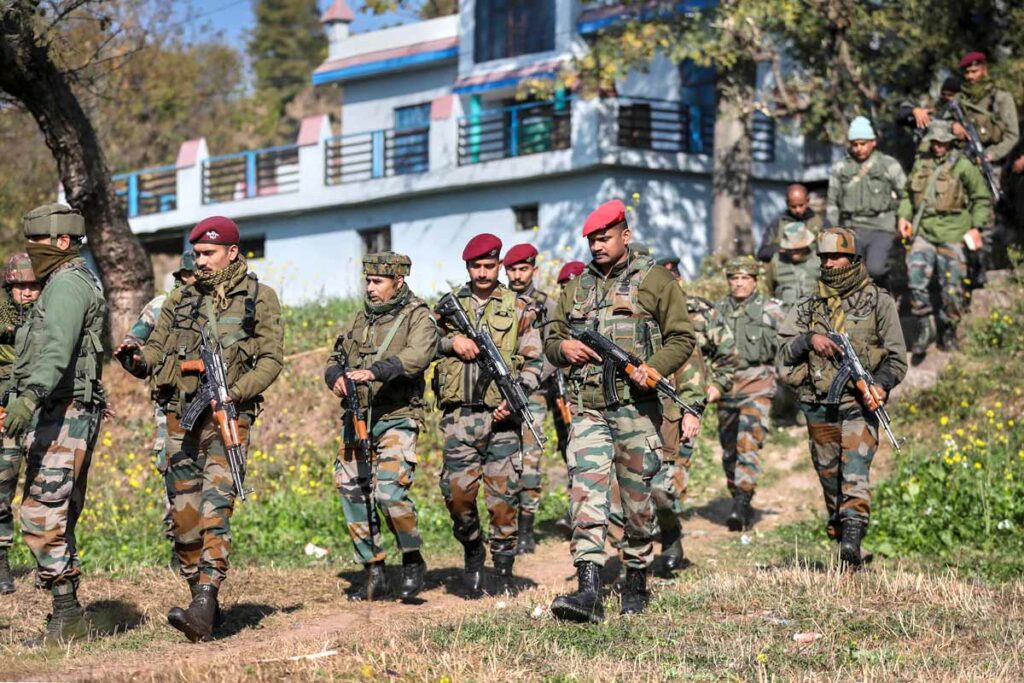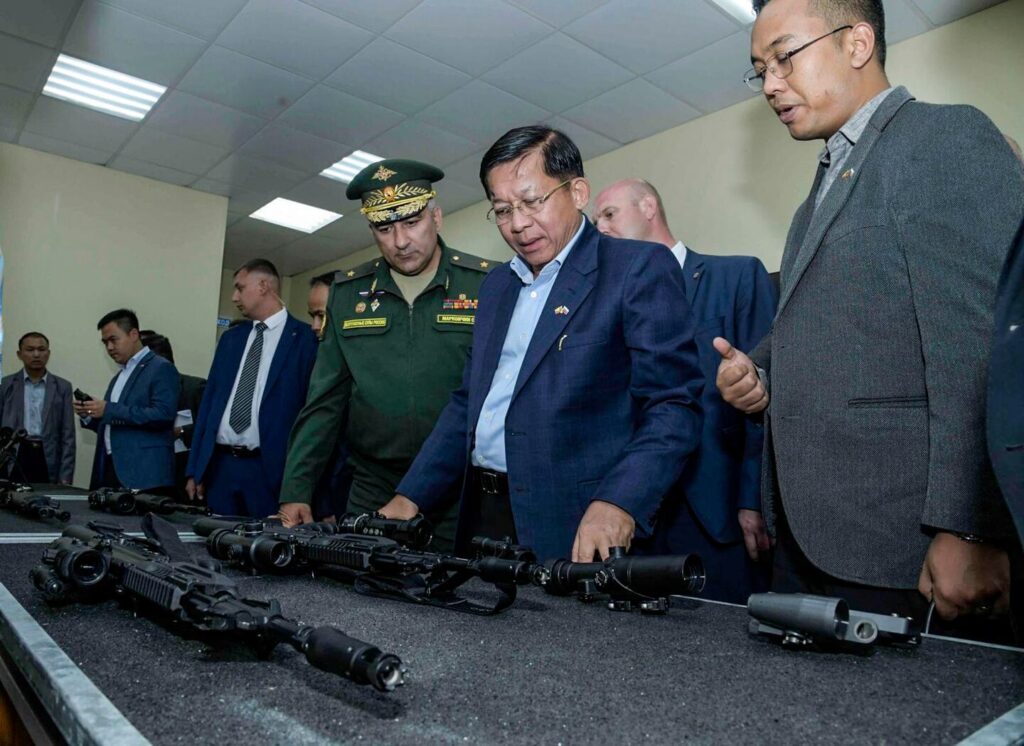MANTRAYA ANALYSIS#78: 12 APRIL 2024
BIBHU PRASAD ROUTRAY
Abstract
New Delhi’s ‘360-degree counter-terrorism approach’ has been credited with significant reduction in terrorism-related incidents and consequent fatalities. Peace and development are the buzzwords in official statements and releases. And yet, the on-the-ground situation and measures by the security establishment to target terrorism and its support and information system reveal that inadequate human intelligence remains an area of concern.

Introduction
In the last week of December 2023, the Jammu and Kashmir Police issued advertisements asking people to provide information & intelligence on trans-border tunnels, drone droppings of narcotics and explosive material, terror activities and terrorists in return for cash rewards ranging from INR 100,000 to 300,000. Similar awards were promised for information on terrorist recruiters in mosques, seminaries, and educational institutions. While seeking civilian cooperation has been a part of the official CT efforts, the details of activities listed in the advertisement provided a unique eye-opening to the terrorism-related challenges to the region.
Remnants of Active Terrorism
In 2023, the terrorism landscape in Kashmir demonstrated a new trend. For the first time, more foreign militants were killed than local terrorists. Out of 72 terrorists killed by security forces in 2023, 50 were of foreign origin. Similarly, as per an assessment carried out by central agencies, of the 91 militants who are still active in J&K including the Rajouri-Poonch region, 61 are foreigners.
This could be linked to the decreasing recruitment of local youth into terror formations, forcing the Pakistani cadres to take centre stage. Around 160 locals joined militancy in 2020, 125 in 2021, and 100 in 2022. In December 2023, police said that only 20 local youths had joined militancy in the year, out of which six have been killed.
The number of active terrorists in J&K too was assessed to be only 81 in September 2023 by the J&K police. 48 of them were Pakistani and the rest were locals. In February 2024, in a fresh assessment, police authorities said that only 25 locals and 30 foreign militants were active in the region. These numbers, despite the apparent discrepancies, are significantly lower than the November 2022 assessment by the Indian Army, which pointed to 305 active terrorists- 82 Pakistani, 53 locals and 170 unknown.
Targeting the Ecosystem
In the assessment of the state police establishment, the vastly weakened terrorist infrastructure in the union territory is sought to be kept alive by narcotics and explosives supplies, which arrive through trans-border tunnels. These tunnels are also used by terrorists to enter India from across the border. Drones flown from Pakistan-occupied Kashmir (PoK) drop weapons, money, narcotics or explosive material in J&K and neighbouring Punjab, which are received by local agents or terror modules. The police further assess that the local youths are being indoctrinated and recruited by terror groups in mosques, madrassas and schools and colleges. A large part of the terrorism ecosystem in the region is being driven externally, by Pakistan-based handlers and smugglers in contact with moles inside Kashmir and Punjab.
Two quadcopters flown from Pakistan hovering over Indian territory were fired at by the army personnel on 16 February at Balnoi-Mendhar and Gulpur sectors in Jammu and Kashmir’s Poonch district. These remote-controlled flying objects were taken back to the Pakistan side by their handlers. A search operation to ensure that there was no dropping of weapons or narcotics by the quadcopters didn’t reveal anything. Earlier on 12 February, Army troops had fired on a drone after picking up its movement in the Mankote area of the Mendhar sector. In November 2023, a drone drop containing grenades, a pistol, ammunition, and an IED was intercepted by the police and army near the LoC. In the same month, Border Security Force (BSF) troops recovered a drone with 534 grams of heroin from an agricultural field in Punjab’s Tarn Taran district.
The threat of contraband delivery by drones came for special mention by Kashmir’s Police Chief in December 2023. He said anyone picking up the delivered contraband is the ‘biggest enemy of the country’ and will be booked for treason and terrorism. He acknowledged the difficulties of picking up the movement of drones through conventional methods like air defence systems. The BSF authorities, on the other hand, claimed to have trained their personnel to listen to the ‘humming sounds’ of the drones and report any such incident to their superiors. The government plans to deploy a completely ‘indigenous’ anti-drone technology along the Pakistan border by July 2024. Three Indian companies have been reportedly shortlisted for the job.
Similarly, after a steady fall in the recruitment of local youths into militancy, the police have set their focus on the over-ground workers (OGWs) and terrorist associates—those who support the active terrorists without joining the group formally. Appeals have been made to the public to inform the authorities about ‘forced or coercive entry by terrorists into any house or vehicle’. In 2023, 89 terror modules were busted and 201 OGWs were booked by the state under the Public Safety Act. A total of 99 properties of terrorists and their collaborators (people who have willfully harboured terrorists and/or stored arms and explosives on their behalf) have been attached by the state.
The Question of Human Intelligence
The police advertisement soliciting cooperation from the public and its moves against the OGW network, however, reveals a chink in its armour, i.e. the drying pool of human informers (mukhbirs in local parlance). In their absence, the official 360-degree CT approach is heavily reliant either on an enhanced deployment of manpower or on technology and gadgets. Both these tactics have inherent limitations, which was starkly revealed in 2023 as two districts—Poonch and Rajouri—witnessed several deaths of security force personnel in three major attacks in 2023. These deaths took place both during terrorist ambushes and ‘intelligence-based’ CT operations, forcing the Indian Army to deploy an unknown number of 4×4 Light Specialist Vehicles (LSVs) known as Armado in the sector. The earlier plan to reduce the strength of the counter-terrorism force, the Rashtriya Rifles battalions from six to four companies was stalled.
In August, the J&K Police assessed that there are two or three terror groups consisting of two or three terrorists active in the Rajouri and Poonch districts. However, neither these militants, apparently belonging to the ‘People’s Anti-Fascist Front’, a proxy of the Jaish-e-Mohammed (JeM) terror group, could be identified nor could their movement be tracked as continued to operate freely in the area. In addition, these terrorists, with body cameras, videotaped the encounters and killings of the security forces and used them as propaganda material. Another three brigades of additional troops were inducted in the sector from various reserve and strike corps formations.
Following the killing of four security force personnel in a terrorist ambush in the Rajouri-Poonch area in December 2023, the army personnel picked up eight civilians from the area for questioning. Within two days, their dead bodies with marks of torture were returned to the local police who in turn contacted the relatives of the dead. Burials took place under police supervision. Further, a 29-second video of Army personnel stripping the three men and putting chilli powder on them went viral on social media. In the video, the men are seen lying lifeless on the floor with severe wounds on their back.
An anonymous security force officer told the media that even though the terrorists hiding in inaccessible caves in the mountains and densely forested regions, need to come down to the nearest human settlement to get logistical support for their survival. In situations like those informers come in handy. He, however, lamented, “While militants and their network of OGWs continue to exist, the informers are missing.” The Indian Army Chief appeared to reiterate the same during his tour of the region in January 2024. Army’s focus was on strengthening the existing intelligence network, including human and technical intelligence, in coordination with other agencies, and outreach to the local population, he said.
Reasons for what appears to be the problem of lack of cooperation from the civilian population can be traced to the official approach which relies heavily on pursuing and punishing all those presumed to be guilty of abating terror. In addition to suspected terrorist collaborators, journalists, civil society and human rights activists too continue to be arrested. They are part of what the police described as 324 ‘people responsible for fermenting trouble’ who were arrested in 2023. Such incessant and sweeping punitive measures may have led to a significant drawdown of open demonstrations of sympathy for terrorism. In turn, this has allowed the government to flag the decreased numbers of stone pelting incidents, calls for shutdown, mourners in the procession for the burial of dead terrorists or even the local youths joining terrorism who risk their families’ properties being confiscated by the state, as an end to support for terrorism and a success of its approach. However, whether this has truly expanded the local support for the government’s measures remains an important question.
Tail Piece
Since 31 October 2023, J&K Police has a new chief. He has been the intelligence chief of the police since 2020 and is believed to have hands-on knowledge of the security situation. In his interactions with the media, he has claimed that there is a clear roadmap to end terrorism in J&K. His assertion syncs well with the objective of the Union Home Ministry to ensure ‘zero terror’ and ‘complete area domination’ in the region by 2026. For that goal to be fulfilled, the shortcomings in human intelligence gathering and the challenges posed by the lack of political space for consensus building need to be addressed. The decrease in terrorism-related incidents has provided a window of opportunity for dialogue between all the stakeholders in J&K on the region’s future. The government can ill afford to ignore this critical need before Kashmir goes to polls later this year.
(Dr. Bibhu Prasad Routray is the Director of MISS. This analysis has been published as part of Mantraya’s ongoing “Fragility, Conflict, and Peace Building” and “Mapping Terror and Insurgent Networks” projects. All Mantraya publications are peer-reviewed.)




